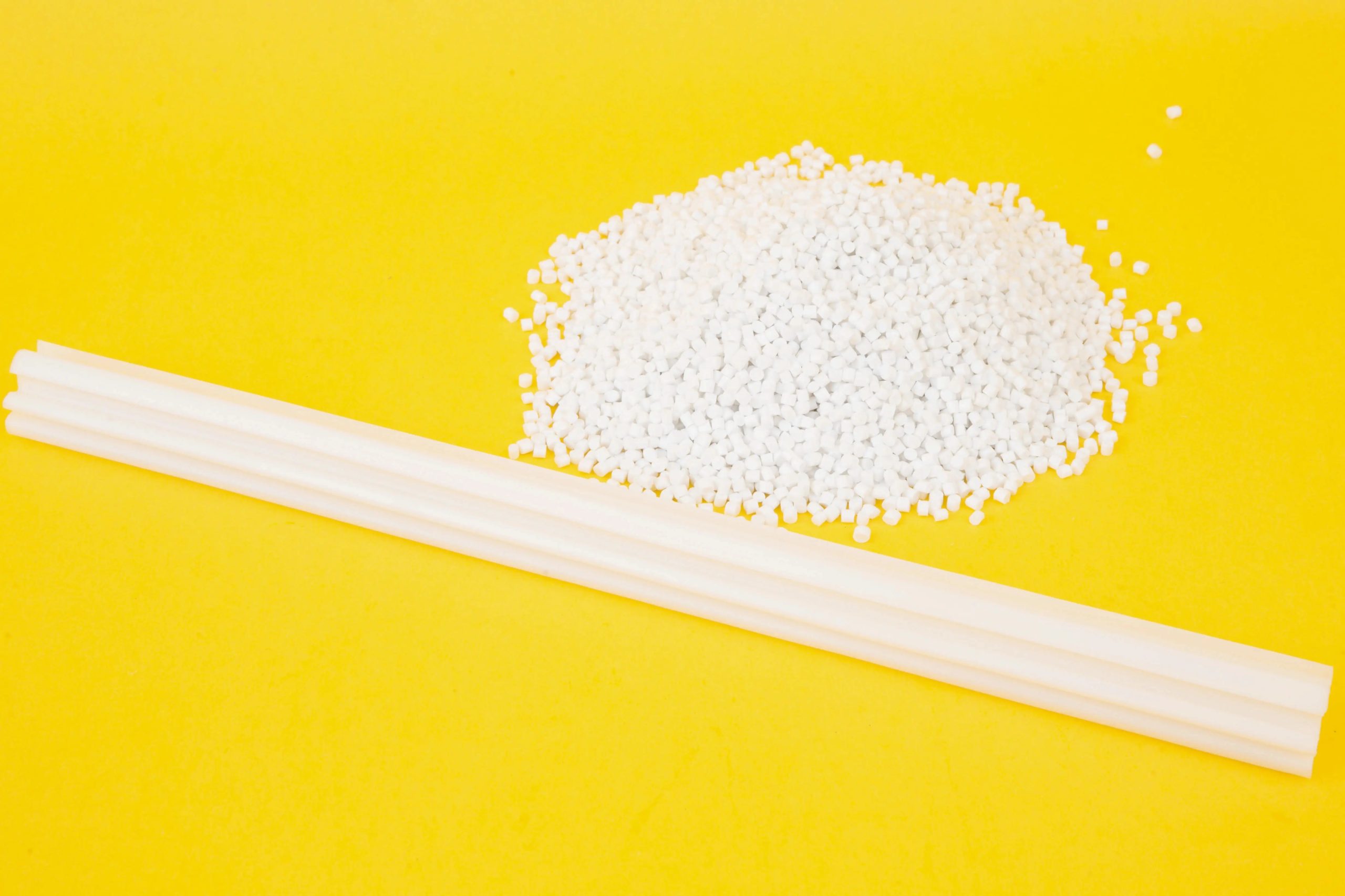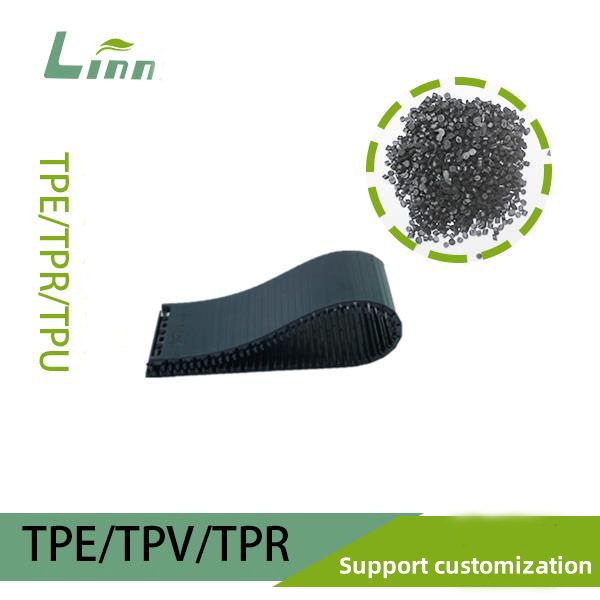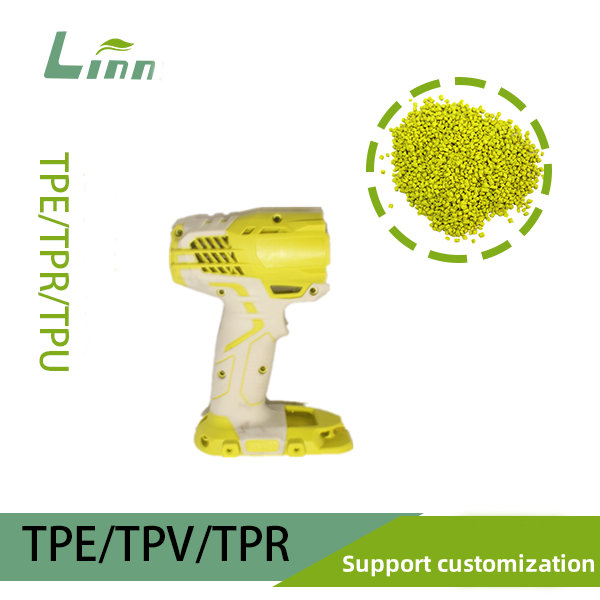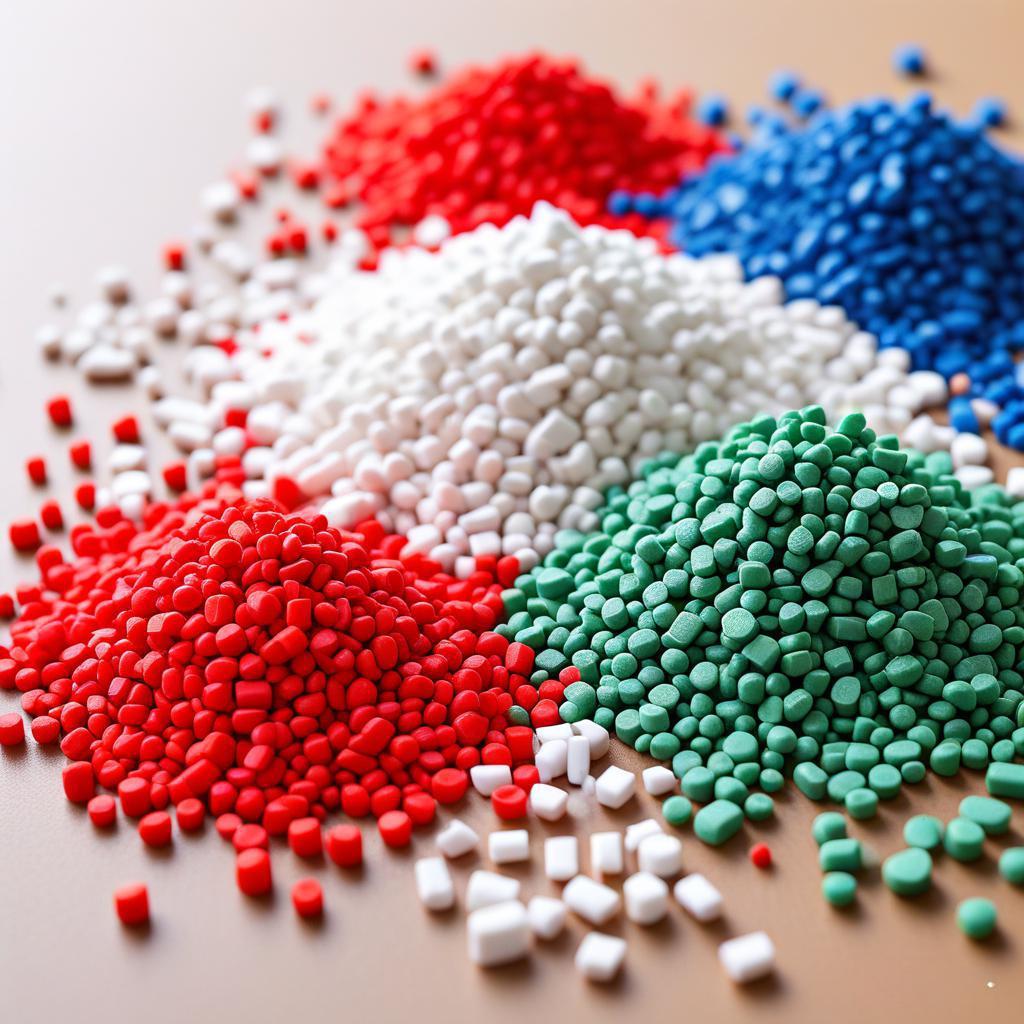Picture this: you’re deep in a plastics shop, the hum of injection molding machines filling the air like a heartbeat. The smell of molten resin—sharp, chemical, almost alive—swirls around you, and you’re staring at a batch of TPE, that rubbery, flexible gem, wondering if you can stretch your budget by mixing in some PP. It’s a question I’ve wrestled with for over a decade in this industry, from tweaking blends for tool grips to troubleshooting for clients chasing cost cuts without sacrificing quality. The search for this topic isn’t just curiosity—it’s the cry of someone facing a real-world puzzle. Maybe you’re a manufacturer trying to lower material costs, or a designer dreaming up a product that needs TPE’s soft touch but PP’s sturdy backbone. Perhaps bubbles, cracks, or weak bonds in your trials have you second-guessing. Whatever the case, you’re after answers that balance feasibility with performance, and I’m here to unpack it, drawing from years of hands-on battles and a few hard-learned lessons.

Blending TPE with PP sounds like a match made in heaven—TPE’s elasticity paired with PP’s toughness and affordability. But is it as simple as tossing them into a hopper and hitting start? Not quite. It’s like trying to mix oil and water without a good emulsifier; they don’t always play nice. I’ve seen the hope in engineers’ eyes when they think they’ve cracked the cost code, only to face parts that delaminate or feel like cheap knockoffs. The intent here is clear: you want a blend that molds smoothly, holds up in use, and doesn’t break the bank. The problem? TPE and PP have different personalities—chemically, thermally, and mechanically. Solving this means understanding their quirks, from polarity clashes to melt flow mismatches, and finding ways to make them dance together. Let’s dive in, exploring why this blend tempts us, where it trips up, and how to pull it off without losing your cool—or your parts.
The Allure of TPE and PP: Why Blend Them?
Let’s start with the stars of the show. TPE, or thermoplastic elastomer, is the shapeshifter of plastics—soft, stretchy, and grippy, like the rubbery coating on your favorite pen. It’s often built on a styrenic backbone (like SEBS) or olefinic bases, melting at 180-220°C to flow into molds with ease. PP, polypropylene, is the workhorse—rigid, heat-resistant, and dirt-cheap, found in everything from car bumpers to yogurt containers. Its melt point hovers around 160-170°C, and it’s got a crystalline structure that screams durability. Blending them seems genius: you’d get TPE’s tactile magic with PP’s structural grit, all while trimming costs since PP’s often half the price per kilo.
I remember my first brush with this idea, back in 2010, working on a budget line of kitchen utensils. The client wanted TPE’s soft grips but balked at the price tag. “Why not mix in some PP?” they asked, eyes gleaming like they’d found the Holy Grail. I was skeptical—my gut said compatibility would be a nightmare—but the challenge hooked me. We ran trials, and while the results weren’t perfect (think streaky surfaces and brittle bonds), they sparked a fascination with what could work. The appeal is universal: cost savings, hybrid properties, and the chance to innovate. But the road to success is paved with pitfalls, and I’ve tripped over most of them.
The Chemistry Clash: Why TPE and PP Don’t Just “Mix”
Here’s where the romance sours. TPE and PP aren’t natural soulmates. TPE’s often polar, especially styrenic ones, while PP’s non-polar, like a cat avoiding water. This polarity mismatch means they resist blending at a molecular level, leading to phase separation—imagine salad dressing splitting into oil and vinegar. When you process them, the mix can look marbled, with weak interfaces that crack under stress. I’ve seen it firsthand: a blended grip that felt fine off the mold but snapped after a week of use, leaving me red-faced in a client meeting.
Then there’s the melt flow issue. TPE’s viscosity is higher, flowing like warm honey, while PP’s thinner, more like water. Blend them, and you risk uneven dispersion—clumps of PP floating in a TPE sea, or vice versa. This messes with injection molding, causing defects like flow marks or delamination. I once ran a 50:50 blend trial for a phone case; the surface looked like a bad tie-dye job, and the client wasn’t amused. Thermal profiles don’t help—PP’s lower melt point means it can overheat in TPE’s processing window, degrading into brittle bits or releasing volatiles that cause bubbles.

Additives muddy the waters too. TPEs often carry oils or plasticizers for flexibility, which PP rejects like a picky eater. These can migrate, leaving oily surfaces or weak spots. Fillers in PP, like talc or glass, can nucleate bubbles or disrupt TPE’s stretch. It’s a delicate balance, and without the right compatibilizers, you’re brewing a recipe for failure.
To lay it out, here’s a table summing up the compatibility hurdles I’ve wrestled with in blends. It’s my go-to mental checklist when planning a run.
|
Challenge |
Root Cause |
Impact on Blend |
Quick Fix Tip |
|---|---|---|---|
|
Polarity Mismatch |
TPE’s polar, PP’s not |
Phase separation, weak bonds |
Add maleic anhydride grafts |
|
Melt Flow Gap |
TPE’s viscous, PP’s fluid |
Uneven flow, surface defects |
Match MFR within 5 g/10 min |
|
Thermal Clash |
Different melt points |
Degradation or poor mixing |
Stagger barrel zones |
|
Additive Issues |
Oils, fillers misalign |
Oozing or brittle spots |
Test for migration pre-run |
This table’s a lifesaver—keeps the chaos in check without drowning in details.
The Moisture Menace: A Hidden Saboteur
Let’s zoom in on a sneaky culprit: moisture. TPEs, especially SEBS-based ones, are hygroscopic, soaking up humidity like a sponge in a sauna. PP’s less thirsty, but any water in the mix turns to steam at processing temps, puffing up bubbles that ruin aesthetics and strength. I learned this the hard way in 2015, blending TPE with PP for a sports grip. We skipped proper drying, thinking a quick oven blast would do. Result? Parts speckled with voids, like a starry sky gone wrong. The client’s face said it all—trust me, you don’t want that look.
Drying TPE at 80-100°C for 3-4 hours is non-negotiable; PP can handle 70°C for 2 hours. Check moisture with a loss-on-drying test—aim below 0.03%. In humid shops, sealed hoppers with desiccant are your best friend. I’ve seen yields jump 25% just from nailing this step.
Compatibilizers: The Glue That Saves the Day
If you’re serious about blending, compatibilizers are your secret weapon. These are additives—think maleic anhydride-grafted PP or SEBS—that bridge the polarity gap, acting like a mediator at a tense family dinner. They chemically tie TPE and PP, boosting adhesion and dispersion. In one project for a medical device handle, we dosed 5% grafted PP into a 70:30 TPE-PP blend. The result? A silky, strong grip that passed drop tests with flying colors. Without it, the layers peeled like bad wallpaper.
Dosage matters—too little, and you’re still incompatible; too much, and you stiffen the mix, killing TPE’s stretch. Start at 3-5% and tweak based on trials. Suppliers like Kraton or Dow have blends pre-compatibilized, but custom mixing lets you fine-tune cost and feel. It’s like cooking your signature dish—adjust the spices till it sings.

Processing Pitfalls: Getting the Blend to Flow Right
Processing TPE-PP blends is where dreams meet reality. Injection molding’s your likely stage, and the settings are everything. Barrel temperatures need a dance: start TPE at 180-200°C, PP slightly lower at 160-180°C. Zone the barrel—rear cooler, front hotter—to ease mixing without scorching PP. I once burned a batch by cranking the nozzle to 220°C; the PP degraded, leaving a charred smell and brittle parts. Lesson learned: sniff the air shot for clues.
Screw speed and back pressure matter too. Keep screws at 50-100 rpm to avoid shearing TPE’s oils into a mess. Back pressure at 5-10 MPa helps mix without frothing. Mold temps? 40-60°C keeps PP crystalline while letting TPE set soft. Too cold, and you get sink marks; too hot, and sticking ruins ejection.
Venting’s critical—blends trap air like nobody’s business. I’ve redesigned molds with 0.02 mm vents at flow ends, letting gases escape like a soft sigh. Without them, you’re begging for bubbles or burn marks. And don’t skimp on trials—run small batches, check flow lines, and feel the part’s texture. It’s tactile, like judging a cake by its crumb.
|
Processing Parameter |
Ideal Setting |
Why It Matters |
Sensory Check |
|---|---|---|---|
|
Barrel Temp (TPE/PP) |
180-200°C / 160-180°C |
Prevents degradation |
Melt looks smooth, not stringy |
|
Screw Speed |
50-100 rpm |
Avoids shear heating |
No burning smell in air shot |
|
Mold Temp |
40-60°C |
Balances set and release |
Part ejects clean, no stick |
|
Vent Depth |
0.01-0.03 mm |
Lets gases escape |
No hissing or burn marks |
This table’s my roadmap—simple, practical, born from late-night mold tweaks.
Real-Life Rumbles: Stories from the Trenches
Let’s get personal with a couple of war stories. In 2018, I consulted for a toy maker blending TPE with PP for bendy action figures. They wanted TPE’s flex but PP’s price. Early runs were a mess—parts split under flex, like overcooked noodles. We added 4% compatibilizer, dried TPE religiously, and zoned the barrel tighter. By week two, kids were twisting those figures without a crack. The client’s grin? Worth every tweak.
Another time, a startup tried a 60:40 TPE-PP blend for bike grips. Bubbles plagued us—moisture, again. We switched to nitrogen-purged storage and slowed injection to 30 mm/s. The grips went from pockmarked to plush, and the startup landed a big retailer. That rush of nailing it? It’s why I love this game.
These aren’t just tales—they’re proof that blending’s possible with grit and smarts.
Strategies for Success: Making TPE-PP Work
Ready to blend? Start with material prep. Dry both resins like your yield depends on it—because it does. Source compatible grades—olefinic TPEs vibe better with PP than styrenic ones. Test MFR (melt flow rate) match; a 5 g/10 min gap is your max.
Formulation is next. Dose compatibilizers at 3-5%, and avoid high filler loads—10% talc tops. Trial small—20 kg batches—to spot defects early. I’ve saved clients thousands by catching streaks before scaling.
Processing tweaks seal the deal. Stagger temps, ease screw speed, and vent like your mold’s life depends on it. Post-mold, anneal at 70°C for an hour to relax stresses. And test—flex, pull, drop—till you trust the part like an old friend.
Beyond the Blend: Long-Term Wins
A good TPE-PP blend isn’t just about molding—it’s about performance. Adhesion strength should hit 4-6 MPa in pull tests; anything less, and you’re risking splits. Surface treatments like plasma can boost bonding, giving that seamless feel. And don’t sleep on sustainability—bio-based PP or recycled TPE blends cut costs and carbon, making your product a green hero.
I’ve seen blends transform products, from grippy tool handles to flexible medical bands. It’s rewarding, like watching a shy kid shine on stage. But it takes patience—tweak, test, repeat.
Wrapping It Up: Blending with Heart and Hustle
Blending TPE with PP is no pipe dream—it’s a craft. With the right compatibilizers, tight processing, and a nose for trouble, you can mold parts that feel luxe without the price tag. I’ve poured years into this, from flops to triumphs, and each run teaches me something new. Your turn: mix smart, mold bold, and make something that lasts.

Quick Q&A: Your Blend Boosters
Q: Can any TPE blend with PP?
A: Olefinic TPEs are best—styrenic ones fight PP’s non-polar nature. Check supplier specs for compatibility.
Q: How much PP can I add without losing TPE’s stretch?
A: Up to 30% keeps decent flex; beyond 50%, it’s stiff city. Test elongation at break.
Q: Do blends always need compatibilizers?
A: Not always, but without them, you’re flirting with delamination. Start at 3% and tweak.
Q: Why do my blends look streaky?
A: Mismatched melt flows or poor mixing. Match MFR and up back pressure slightly.
Q: Can I recycle TPE-PP blends?
A: Yes, if compatibilized well—grind and reprocess, but test for degradation first.
Q: What’s the cheapest way to try blending?
A: Small batch trials with pre-blended TPE-PP compounds—saves tooling tears.





